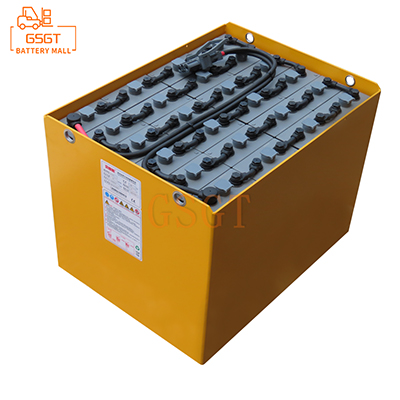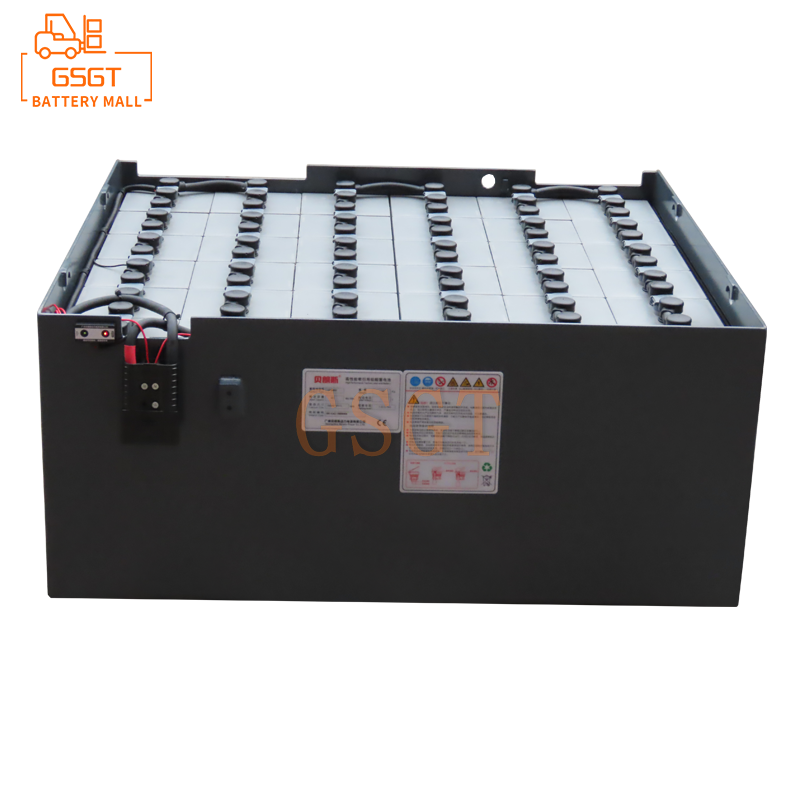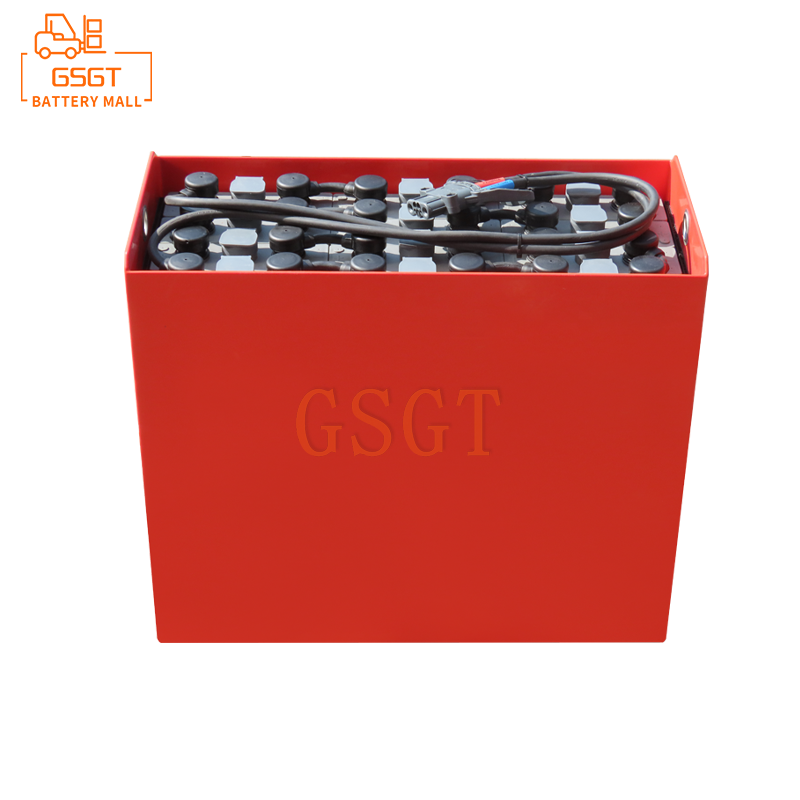Time:2025-04-24 09:50:18
Browse:512
Abstract
This article elaborates in detail on the daily inspection items and standardized operation procedures of lead-acid batteries in forklifts, aiming to help forklift operators and maintenance personnel fully understand the key points of lead-acid battery maintenance, ensure their safe and efficient operation, extend their service life, reduce usage costs, and provide strong support for the stable development of forklift operations in enterprises.
1. Introduction
As an indispensable handling equipment in industries such as logistics and warehousing, the performance and reliability of lead-acid batteries, the power source of forklifts, are of vital importance. The normal operation of lead-acid batteries is directly related to the working efficiency and service life of forklifts. If lead-acid batteries are not subject to scientific and reasonable daily inspections and standardized operations, it may lead to a decline in battery performance, frequent malfunctions, and even cause safety accidents. Therefore, it is of great practical significance to have an in-depth understanding of the daily inspection items and standardized operation procedures of forklift lead-acid batteries.
2. Daily Inspection Items for Lead-Acid Batteries in Forklifts
(1) Visual inspection
1.**Shell Inspection**
Before daily work, carefully check whether the lead-acid battery casing has any damage, cracks, deformations or other conditions. The integrity of the casing is crucial for preventing the leakage of the electrolyte inside the battery. Once the casing is found to be damaged, the battery should be stopped from use immediately and repaired or replaced in a timely manner. Minor cracks may not affect battery use in the short term, but over time, they may expand, causing electrolyte leakage, corroding the forklift chassis and other components, and may also lead to serious problems such as short circuits.
2. **Terminal inspection**
Check whether there is any corrosion or loosening at the battery terminals. Terminal corrosion is usually caused by electrolyte leakage or poor contact. Corroded terminals will increase resistance, affect the normal transmission of current, reduce the battery's discharge performance, and in severe cases, even prevent the forklift from starting. For minor corrosion, a dedicated cleaner and a copper wire brush can be used for cleaning. After cleaning, apply an appropriate amount of Vaseline or a dedicated anti-corrosion paste to prevent further corrosion. If the terminal is loose, use an appropriate tool to tighten it to ensure a firm connection, but be careful not to over-tighten and damage the terminal.
3. ** Inspection of Connecting wires **
Check whether the connection wires of the battery are damaged, aged or exposed. Damaged connecting wires may cause leakage of electricity, posing safety hazards and also affecting the normal operation of the battery. The resistance of aged connection wires increases, which will reduce the discharge efficiency of the battery. Once any problem with the connecting wires is found, new ones should be replaced in time and it should be ensured that the connection is correct and firm.
(2) Electrolyte Inspection
1.**Liquid Level Check**
The electrolyte inside a lead-acid battery is composed of sulfuric acid and distilled water. During the battery's operation, the electrolyte gradually decreases due to electrolysis and evaporation. It is very important to check the electrolyte level regularly. Under normal circumstances, a transparent liquid level gauge or observation hole should be used to check the electrolyte level. The liquid level should be maintained within a range of 10 to 15 millimeters above the plates. If the liquid level is too low, the plates will be exposed to the air, causing sulfation of the plates and reducing the battery capacity and service life. If the liquid level is too high, during the battery charging or usage process, the electrolyte may overflow, corroding the battery casing and forklift components. When the liquid level is found to be too low, distilled water or special lead-acid battery replenishment fluid should be added. It is strictly forbidden to add tap water or other impure water, as impurities in tap water may cause damage to the battery.
2. **Density Check**
The density of the electrolyte is closely related to the charging state of the battery. Measuring the density of the electrolyte with a hydrometer can determine the charging condition of the battery. Generally speaking, in the fully charged state, the density of the electrolyte is approximately 1.28g/cm³ (at 25℃); As the battery discharges, the density will gradually decrease. The density standards of the electrolyte may vary slightly among different models and specifications of lead-acid batteries. For specific details, please refer to the battery manual. By regularly measuring the density of the electrolyte, the charging and discharging status of the battery can be understood in a timely manner, so as to take corresponding measures for adjustment. If abnormal density of the electrolyte is detected, such as being too high or too low, it may indicate a battery malfunction and further inspection and handling are required.
3. ** Color and Odor Inspection **
Under normal circumstances, the electrolyte should be clear and transparent, without obvious turbidity or sediment, and without a pungent smell. If the color of the electrolyte darkens, becomes cloudy or precipitates, it may be that a chemical reaction has occurred on the internal plates of the battery or there are impurities, which will affect the performance of the battery. At the same time, if you smell a pungent odor, it might be due to electrolyte leakage or overheating inside the battery. You should immediately stop using the battery and check the cause. If necessary, contact a professional for repair.
(3) Check the charging status
1. **Voltage measurement**
Measuring the terminal voltage of a battery with a multimeter can initially determine the battery's charging status. When at rest (i.e., after the battery has not undergone charging and discharging operations for a period of time), the terminal voltage of a normal lead-acid battery should be close to its nominal voltage. If the terminal voltage is significantly lower than this range, it indicates that the battery may be in a discharged state and needs to be charged. During the charging process, the charging progress can also be understood by measuring the terminal voltage. When the terminal voltage reaches a certain value and remains stable for a period of time, it indicates that the battery is nearly fully charged.
2. ** Charging Time and current check **
Record the time and charging current of each battery charge. The standard charging time and current of batteries of different capacities are different. If the charging time is too long or too short, or the charging current is abnormal, it may be due to battery failure or a problem with the charging equipment. For instance, if the charging time is too long and the current remains persistently low, it might be due to severe sulfation of the battery plates, resulting in a decline in the charging acceptance capacity. If the charging current is too large and the voltage rises too fast, it may be due to inaccurate voltage regulation of the charging device or a short circuit inside the battery. By checking and analyzing the charging time and current, problems can be identified in a timely manner and corresponding solutions can be taken.
(4) Temperature check
During the use and charging of the battery, it is necessary to pay attention to checking the battery's temperature. The normal operating temperature range of lead-acid batteries is generally between 5 and 45 degrees Celsius. If the battery temperature is too high, exceeding 45℃, it may accelerate the chemical reactions inside the battery, causing the electrolyte to evaporate faster, the plates to age, and even potentially leading to serious accidents such as battery bulging and explosion. Excessively high temperatures may be caused by reasons such as excessive charging current, long charging time, poor battery heat dissipation, or internal battery faults. When the battery temperature is found to be too high, charging or using it should be stopped immediately. Wait until the battery cools down before checking and handling it. If the battery temperature is too low, it will reduce the battery's discharge performance, resulting in insufficient power for the forklift. When using batteries in low-temperature environments, appropriate insulation measures can be taken, such as using insulation covers, etc.
3. Standardized Operating Procedures for Lead-Acid Batteries in Forklifts
(1) Charging operation Process
1. **Preparatory Work**
Before charging a lead-acid battery, it is necessary to first check whether the charging equipment is functioning properly, including whether the power cord, plug, socket, etc. of the charger are intact and undamaged, and whether the charging parameters are set in line with the battery requirements. At the same time, ensure that the charging area is well-ventilated and kept away from flammable and explosive items, as hydrogen and other flammable gases are produced during the battery charging process. Poor ventilation may cause an explosion accident. In addition, it is necessary to check the appearance of the battery and the level of the electrolyte, etc., to ensure that the battery is in a normal state.
2. **Connect the battery to the charger**
Connect the output terminal of the charger correctly to the positive and negative terminals of the lead-acid battery. Generally, the red clip is connected to the positive terminal and the black clip to the negative terminal. When connecting, make sure the clips firmly grip the terminals to avoid poor contact. During the connection process, the negative terminal of the battery should be connected first, and then the positive terminal. After charging is completed, when disassembling, the sequence is reversed. First, remove the positive terminal, then the negative terminal to prevent sparks from generating danger.
3. **Set the charging parameters**
Set the appropriate charging voltage, current and charging time according to the battery model, capacity and user manual. The charging parameters of different types of lead-acid batteries vary. Generally speaking, the initial charging adopts a charging method with a small current for a long time to ensure that the plates have a full chemical reaction. Ordinary charging can select the appropriate charging current and time based on the degree of battery depletion. After setting the parameters, start the charger and begin charging.
4. **Charging Process Monitoring**
During the charging process, it is necessary to regularly check the battery's temperature, voltage, electrolyte level and density, etc., and observe the working status of the charging equipment, such as whether the charging current and voltage are stable. If any abnormal situation is found, such as excessively high battery temperature or unstable charging current, charging should be stopped immediately, the cause checked and dealt with. At the same time, relevant data during the charging process should be recorded for subsequent analysis and summary.
5. ** Charging completion operation **
When the battery is fully charged, first turn off the power of the charger, and then remove the connection wires between the charger and the battery in the correct order. After the charging is completed, the battery should be left to stand for a period of time (generally 30 minutes to 1 hour) to ensure that the electrolyte inside the battery is fully mixed. Then, check the terminal voltage, electrolyte level and other conditions of the battery again to ensure that the battery is in a normal state.
(2) Discharge Operation Process
1. **Check before startup**
Before using a forklift, a comprehensive inspection of the lead-acid battery should be carried out, including inspection items such as appearance, electrolyte, charging status and temperature, to ensure that the battery is in good working condition. At the same time, check whether other components of the forklift, such as the brakes and steering system, are normal to ensure the safe operation of the forklift.
2. **Start the forklift**
Turn on the power switch of the forklift and start the forklift. During the start-up process, pay attention to observing the battery power indicator light on the dashboard and the display of other instruments to ensure that the battery power is sufficient and all functions of the forklift are normal. If the battery power is found to be too low or there is an abnormal display, the forklift should be stopped from use and the battery should be inspected and charged.
3. **Normal operation**
During the operation of forklifts, it is necessary to reasonably control the traveling speed and load of the forklift to avoid excessive discharge. Excessive discharge can cause sulfation of the battery plates, shortening the battery's service life. When the battery power indicator light shows that the battery is low, the operation should be stopped in time and the forklift should be driven back to the charging area for charging. At the same time, during the operation, pay attention to observing the working condition of the battery, such as whether there is any abnormal heating or odor. If any abnormality is found, stop the operation immediately and check the battery.
4. ** Homework finished **
After the forklift operation is completed, first turn off the power switch of the forklift, and then park the forklift in the designated position. Check the appearance and connection of the battery again. Only after ensuring there are no abnormalities can you leave.
(3) Maintenance and servicing operation procedures
1. **Regular cleaning**
Regularly clean lead-acid batteries, including the casing, terminals and connecting wires, etc. Wipe the casing with a clean damp cloth to remove dust, dirt and residual electrolyte on the surface to prevent the electrolyte from corroding the casing. For the corrosion on terminals and connecting wires, clean and handle them in accordance with the methods mentioned earlier. During the cleaning process, be careful to avoid water entering the battery interior.
2. **Electrolyte replenishment**
Based on the inspection of the electrolyte level, regularly replenish distilled water or dedicated lead-acid battery replenishment fluid. When replenishing the electrolyte, add it slowly to avoid overflow. After addition, use a hydrometer to measure the density of the electrolyte to ensure it is within the normal range. If the density of the electrolyte does not meet the requirements, it can be adjusted by adding distilled water or an appropriate amount of sulfuric acid. However, the adjustment process requires careful operation and is best carried out by professionals.
3. ** Regular deep discharge and charging **
To activate the battery plates and increase the battery capacity, it is recommended to perform deep discharge and charging operations regularly. It is generally done once every 2 to 3 months. Discharge the battery to a low level (but do not over-discharge), and then fully charge it. During the deep discharge and charging process, it is necessary to strictly follow the charging operation procedures and closely observe the various parameters and working status of the battery.
4.** Regular inspection and maintenance**
Regularly send lead-acid batteries to professional testing institutions or have them undergo comprehensive inspections by professional technicians, including battery capacity tests and plate condition checks, etc. Through detection, potential problems with the battery can be identified in a timely manner, and corresponding maintenance measures can be taken. At the same time, establish a battery maintenance file to record information such as the battery's usage time, charging frequency, and maintenance status, so as to track and analyze the battery's performance and lifespan.
Ⅳ. Conclusion
The daily inspection items and standardized operation procedures for forklift lead-acid batteries are the key to ensuring the normal operation of the batteries and extending their service life. Through daily inspections of aspects such as appearance, electrolyte, charging status and temperature, problems existing in the battery can be detected in a timely manner and corresponding measures can be taken to deal with them. Strictly following the standardized charging, discharging and maintenance operation procedures can ensure that the battery works in a safe and efficient state. Enterprises and forklift operators should attach great importance to the maintenance of lead-acid batteries, strengthen the training of relevant knowledge and skills, improve operation levels, thereby reducing the operating costs of forklifts, enhancing the efficiency of logistics operations, and providing a strong guarantee for the development of enterprises. Meanwhile, with the continuous development of technology, new battery technologies are constantly emerging. Enterprises should also pay attention to industry trends and introduce more advanced battery technologies in a timely manner to adapt to the constantly changing market demands.

$3405

$4045

$1345

$1105

MESSAGE
Professional And Efficient
Security
Affordable Price
Professional Services